-
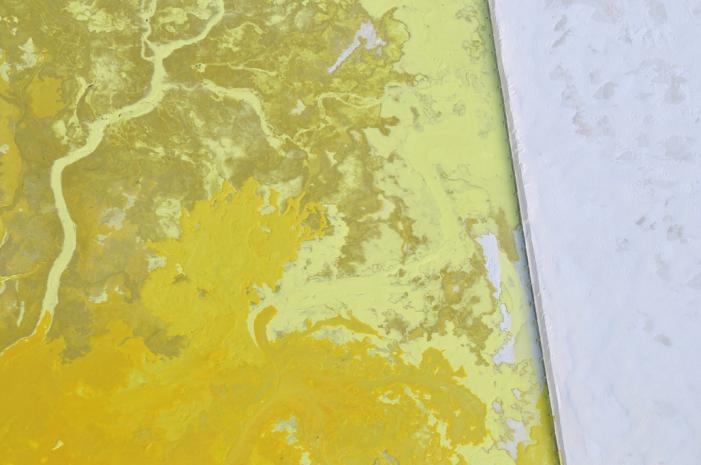
1. Sulfur and Snow, N57.02.33 W111.39.57, Syncrude, Mildred Lake, Alberta, Canada: Detail of one of the immense sulfur piles adjacent to Syncrude’s Mildred Lake upgrading refinery.
-
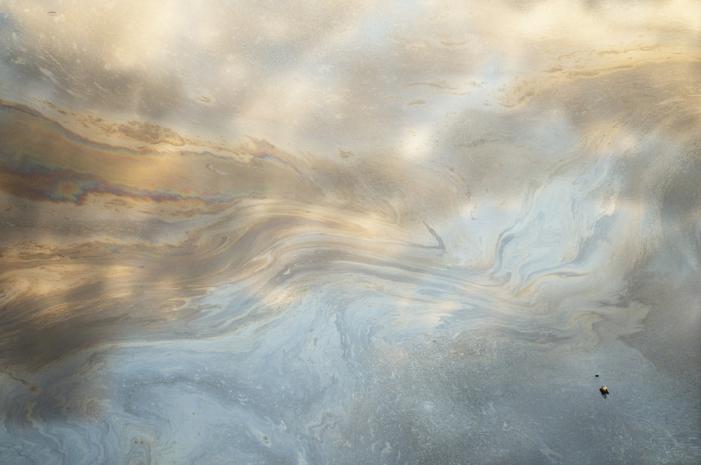
2. Bitu-Man B2401510 c1 s100: Lone scarecrow known as a “bitu-man” welded to a raft, floating in a vast tar pond.
-

3. Slick Sunset, N57.14.07 W11.35.15 Shell Albian Sands, Alberta, Canada: A thick layer of residual bitumen and a thin film of oil/bitumen on the Albian Sands Muskeg River Mine Tar Pond reflect a late summer sunset.
-

4. Boreal Forest and Mist, N56.32.13 W112.12.10,10 Fort McMurray, Alberta: Evening mist shrouding a creek bottom on the banks of the Athabasca River, about 50 km west of Fort McMurray.
-
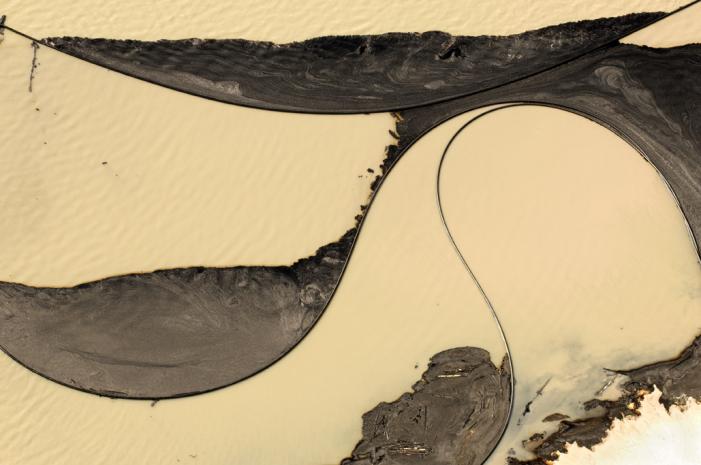
5. Bitumen Slick, N 57.19.28 W 111.25.44, Syncrude Aurora North, Alberta, Canada Description: This is the tailings pond where industry suffered its first significant public relations setback when, 1,600 ducks died after landing on the surface.
-
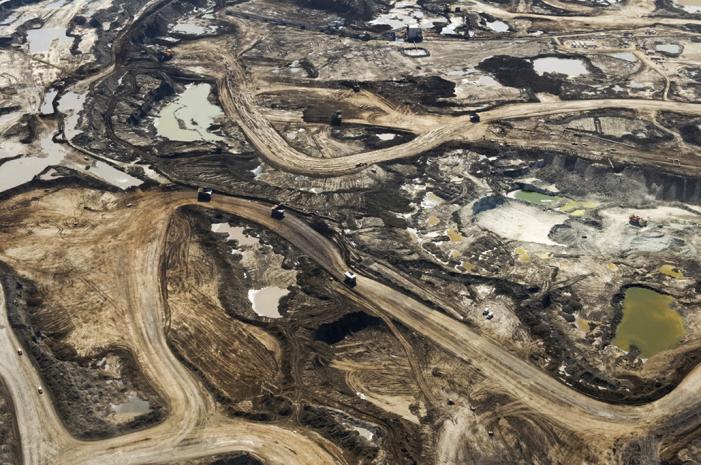
6. Open Pit Bitumen Mine, N 56.57.14 W 111.22.38, Suncor Millennium Mine, Alberta, Canada: Wide angle image of Suncor’s Millennium Mine, showing machinery moving along swooping roads and between multicolor piles and ponds.
-
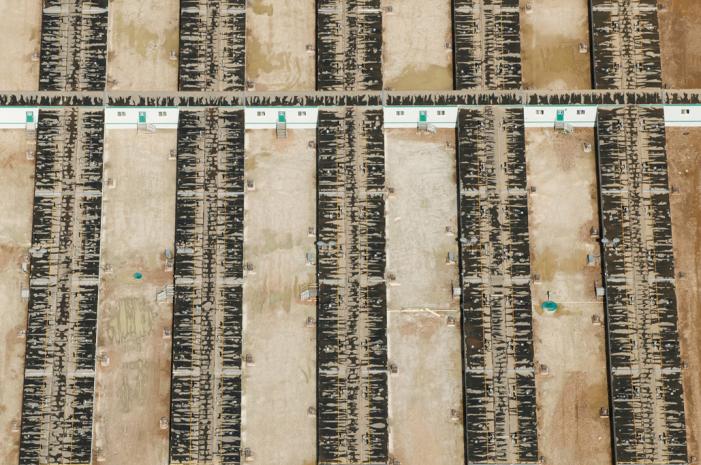
7. Camp, N 57.11.16 W 111.34.59, Albian Sands Muskeg River Mine, Alberta, Canada: Detail of one of the many camps of prefab trailers housing the tens of thousands of workers engaged in construction, the largest source of employment in the tar patch.
-
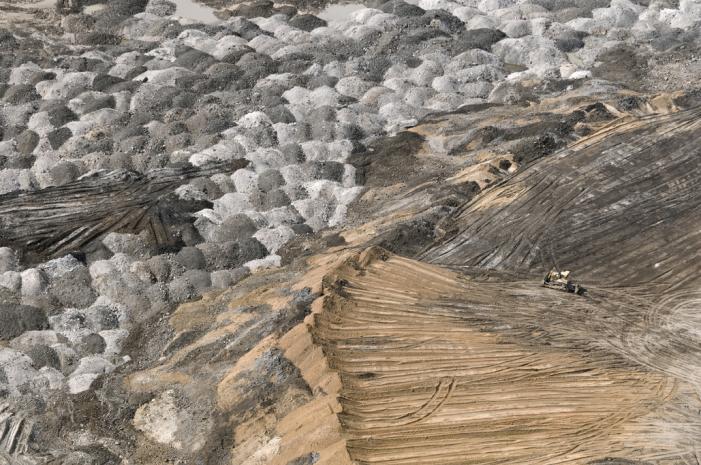
8. Slag and Bulldozer, N 57.20.39 W 111.30.34, Syncrude Aurora North, Alberta, Canada: Slag piles of various shades of grey and black coke, a byproduct of the upgrading process of converting bitumen into synthetic crude oil, are concealed by a bulldozer.
-

9. Truck Treads in Dust and Snow, N 56.57.41 W 111.20.44, Suncor Millennium Mine, Alberta, Canada: The areas are covered in layers of dust from the mining machinery.
-
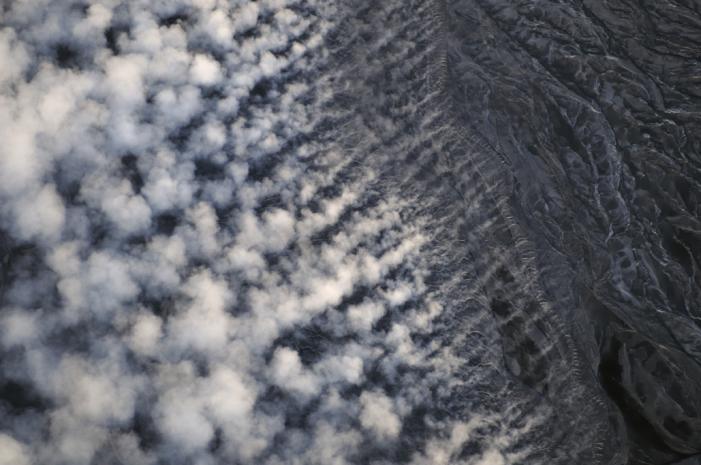
10. Steam and Bitumen Sludge, N 57.14.08 W 111.32.46, Muskeg River Mine, Shell Albian Sands, Alberta, Canada: Steam rising from warm effluent pouring out across the edge of the Muskeg River Mine’s tailings pond.
-
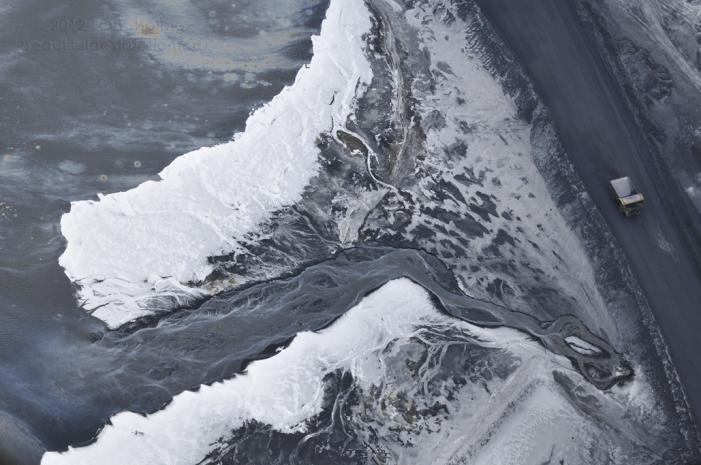
11. Coke Road and Tailings Pond, N 57.00.35 W 111.28.15, Suncor Upgrader, Alberta, Canada: A truck used to haul petroleum coke to a stockpile near Suncor’s upgrader.
-
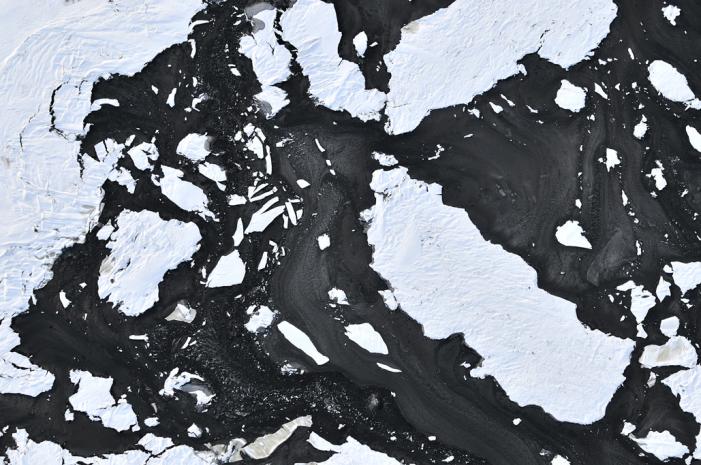
12. Bitumen and Snow One, N 56.52.43 W 111.20.51, Suncor Southern Tailings Pond, Alberta, Canada: Compacted snow shattering into so many mini-icebergs suspended in raw bitumen on the surface of Suncor’s Southern tailings pond.
-
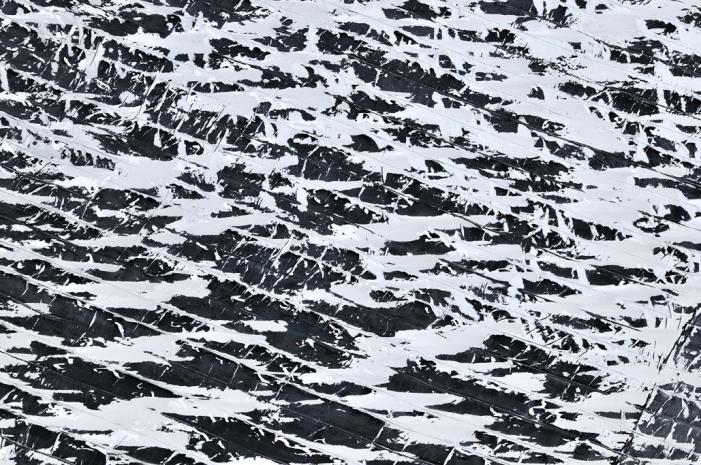
13. Pond 5 Coke Cap, N 57.00.25 W 111.31.33, Suncor Upgrader, Alberta, Canada: Detail of the reclamation of Suncor’s Pond 5, where petroleum coke is spread over a geosynthetic fabric to float on the tailings pond.
-
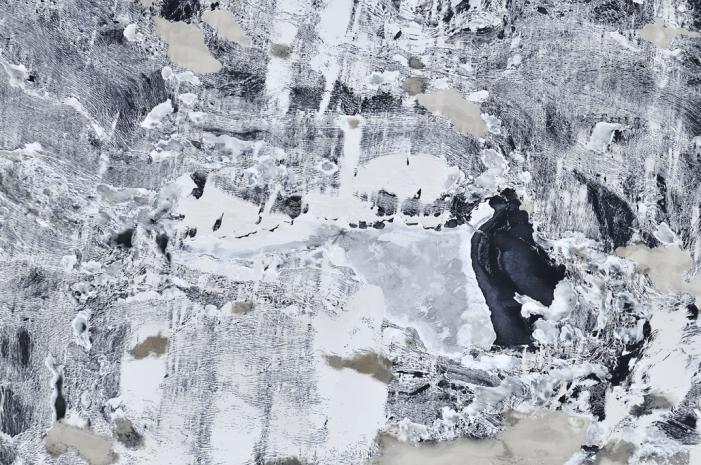
14. Name: Snow, Ice and Bitumen Marble, N 56.58.45 W 111.23.32, Suncor Millennium Mine, Alberta, Canada: Frozen detail of Pond 7 of Suncor’s Steepbank Mine.
-
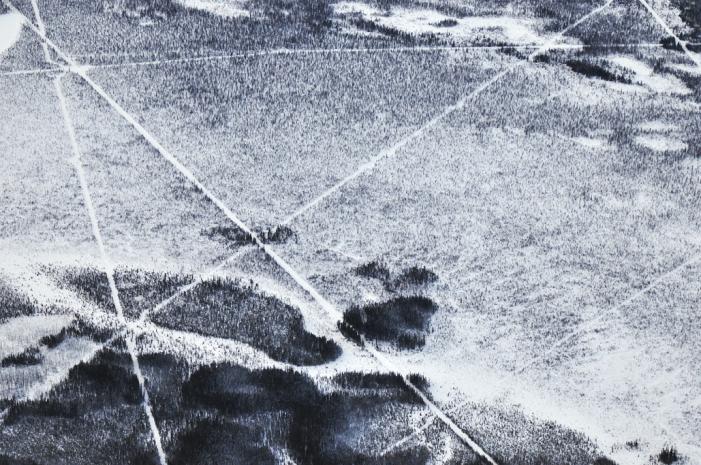
15. Seismic Exploration Lines House River. This snow pack clearly reveals seismic exploration work in preparation for possible SAGD (Steam-Assisted Gravity Drainage) extraction of bitumen.
-
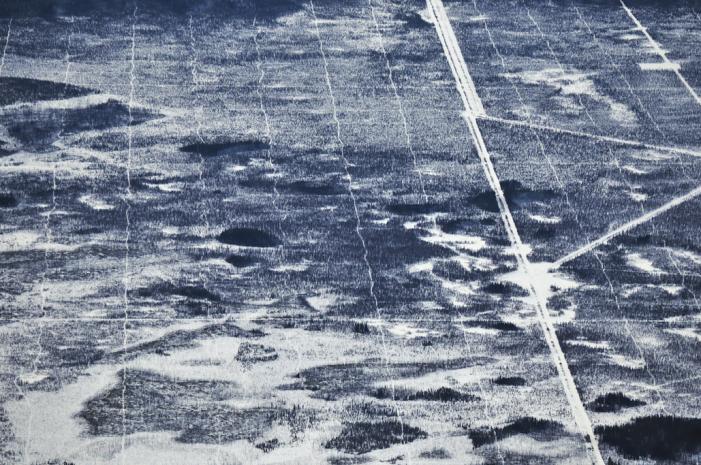
16. Seismic Exploration Lines Christina Basin, N 55.45.12 W 111.50.49, Mariana Lake, Alberta, Canada: These lines decrease the population of the woodland caribou.
Louis Helbig is a commercial pilot and self-taught photographer who shot the Alberta Tar Sands in the summer of 2008 and the winter of 2012. Helbig’s images are disturbing and contradictory in their rendered beauty of a subject that is so controversial and environmentally destructive. The genius of his work is in his ability to hold the mirror up, forcing us to confront the seductive appeal of our fossil fuel addiction.
“The Alberta tar sands are a place of superlatives, a place of awesome beauty and destruction,” Helbig said. “They are a kaleidoscope of contrasts, colours and patterns keeping time with the seemingly unstoppable movement of machinery, smoke and effluent. Their scale is otherworldly, the details peculiar and surreal.
“In exhibiting this imagery I have discovered that my interpretation of this controversial subject seems – more often than I could ever have predicted, or hoped – to transcend the shrill polarities that have encumbered the issue. The art seems to provide a space for some viewers, whatever their opinions or preconceptions, to reflect and engage their imaginations, themselves and each other.
“The tar sands, as with its pipelines, are of our creation, a human project, with all the contradictions and drama inherent in that. They are as good and bad, as beautiful and destructive as we are as human beings. I hope my art opens a window on that.”
Born in Toronto and raised in Williams Lake, British Columbia, Louis Helbig is an Ottawa-based artist and photographer specializing in aerials. His work has been widely exhibited and published in Canada and around the world.
His background includes professional roles within public, NGO and private organizations in Canada and abroad including the Government of British Columbia, Foreign Affairs Canada, CUSO and Sharp Wings. He has an MSc in Economic History from the London School of Economics and represented Canada as a member of its National Cross Country Ski Team.
Photography by Louis Helbig
3 WAYS TO SHOW YOUR SUPPORT
- Log in to post comments











